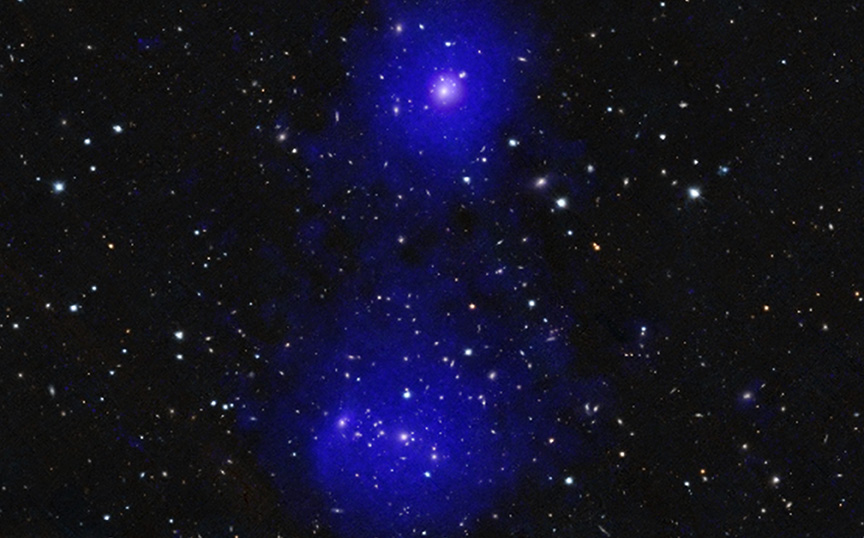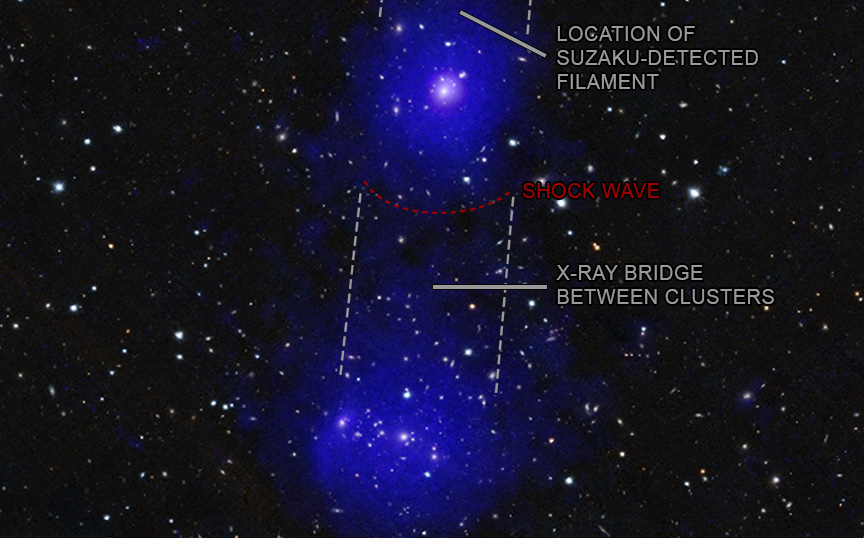NASA | MSFC | SAO | Chandra X-ray Observatory | 2022 Oct 13
This image features Abell 98, a system of galaxy clusters that includes a pair in the early stages of a collision. Astronomers have used data from NASA’s Chandra X-ray Observatory (shown as blue and purple with optical data from the WIYN telescope on Kitt Peak in Arizona appearing white and red) to identify key structures and look for “missing” matter in the Universe.(Credit: X-ray: NASA/CXC/CfA/A. Sarkar; Optical: NSF/NOIRLab/WIYN)
This missing material is not dark matter, which is invisible, of an unknown nature, and thought to constitute most of the matter in the universe, but “normal” matter found in familiar objects like stars, planets, and humans. About a third of this matter that was created in the first billion years or so after the Big Bang has yet to be detected by observations of the local universe, that is, in regions less than a few billion light-years from Earth.
Scientists have proposed that at least some of this unaccounted-for mass could be hidden in gigantic strands, or filaments, of warm to hot (temperatures of 10,000 to 10 million Kelvin) gas in the space in between galaxies and clusters of galaxies. They have dubbed this the “warm-hot intergalactic medium,” or WHIM. ...
Suzaku Observations of the Cluster Outskirts and Intercluster
Filament in the Triple Merger Cluster Abell 98 ~ Gabriella E. Alvarez et al
- arXiv > astro-ph > arXiv:2206.08430 > Jun 16 2022

